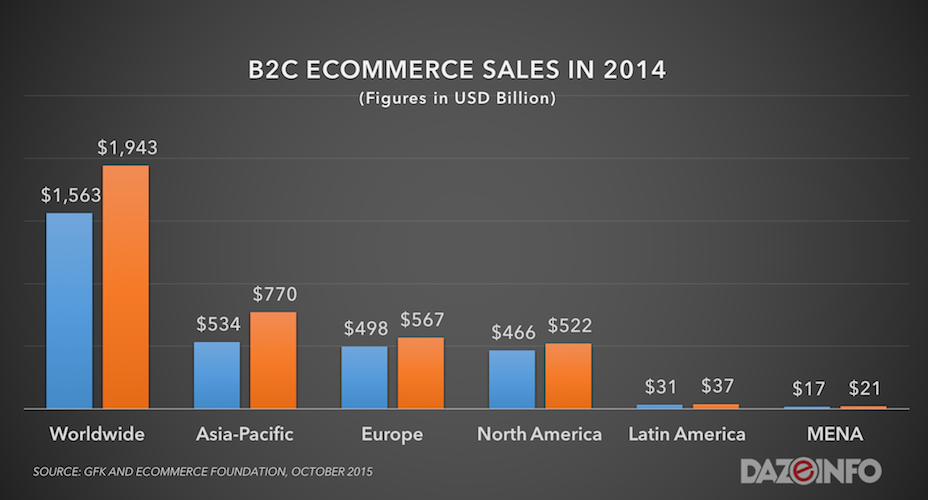Day in and day out, the mammoth social media platform Facebook Inc. (NASDAQ:FB) evolve to fulfill Mark’s dream of the connected world. One such attempt is introducing Canvas a product allowing the users to click on the Facebook ad, browse through the products and buy it on Facebook only. Facebook is constantly making attempts to enhance the advertising experience, which eventually allows advertisers to record more returns on its advertising dollars. With Canvas, the social media titan is attempting to boost and support its eCommerce advertisers.
Canvas is the extended shopping section for the prospective buyers on mobile. With this feature in place, the Facebook mobile users have an option either to gets redirected to the retailer website or make a purchase on Facebook itself avoiding the slow load time of retailer’s mobile website and buffering time. On the Facebook, users can view the product catalog in details just before clicking the ‘Buy” button. The product, however, is in the testing phase and is available for few selected users in the US only.
The Facebook’s new move intends to enhance the shopping experience that leads mobile users to buy more products. About 45% of business websites are not optimised for a smooth shopping experience. The percentage rises further to 91% when it comes to small & medium business, claims a report from BaseKit. Due to the slow load time owning to un-optimized images, videos and pages often frustrate mobile shoppers, that results in lost sales.
Why is Facebook More Focused on Mobile Shoppers?
For the last one year, Facebook has rolled out few features targeted to its mobile users. Canvas, once again, is focused on the mobile shoppers; according to Citro’s latest report on global mobile commerce, mobile devices are accounted for 35% of total retail transactions globally in Q3 2015. The impact of mobile is clearly visible on Facebook’s user base as well. The mobile monthly active users (MAUs) on Facebook increased by 23% year-over-year to 1.31 billion as of June 30, 2015.
The exploded adoption of smartphones and apps is accelerating the growth rate of eCommerce industry. By the end of 2014, 2.6 billion people worldwide were using a smartphone. The figure is expected to rise to 6.1 billion by 2020, estimates mobile network expert Ericsson. This amounts to 70% of the global population.
In comparison, there are 3.2 billion internet users worldwide now. The industry experts reckon the number of people using the internet worldwide would reach 7.6 billion in the next five years.
It is clearly evident that worldwide penetration of smartphone is much faster than the internet, considering the farther one is introduced to the world much later. People are spending more time on the smartphone than any other device these days. And, with the introduction of the high-speed, such as 3G and 4G, mobile internet and enhanced data security, smartphone users are becoming more comfortable with buy things on their mobile devices. The Ericsson report also claims that 90% of the populated globe will have high-speed internet connectivity by 2020.
These trends clearly indicate that Smartphone is the emerging medium of eCommerce and Facebook is attempting to draw the optimum from its huge user base.
Global Online Shopping Scenario
On the other hand, global eCommerce industry has been witnessing an unprecedented growth for the last few years. However, despite the extensive reach the real potential of the industry is yet to be explored and eRetailers have only scratched the surface till now. On an average 50% of the internet users are yet to buy anything online. Out of 1.56 billion internet users in Asia-Pacific, only 523.1 million bought at least one product online in 2014. In comparison, the internet users in Europe and the US are more matured and open to online shopping. In Europe, which is a house of 583 million internet users, 273.9 million internet users bought things online in 2014. However, in the US 195.5 million people shopped online in 2014, which is equals to 70% of the country’s total internet population. But the rest of the world is yet to get the hand of buying products online.
According to the recent report, titled “Global B2C E-Commerce Report 2015“, B2C e-commerce industry recorded 24% yearly growth, clocking $1.94 trillion in 2014. The report also estimates that despite slow growth in 2015, the B2C eCommerce sales will reach $2.2 trillion in 2015. Asia Pacific markets are top on the willing to buy online products list with 60% intending to buy online when compared to North America 52% and Europe 45%. With Facebook providing a refined mobile platform for prospective online buyers, it is intending to make the social hub a one stop shop to buy the required products.
Facebook Refining Online Commerce
The above figures clearly portray a lucrative picture of the future eCommerce industry. Facebook is willing to leave no stone unturned to reap the most out of. Through the latest initiative Free Basics, Facebook is trying to bring unconnected populace in the developing nations on the internet by providing free internet access. Apparently, Facebook is trying to draw the monetary potential from the crowd that is unreached so far and yet to get a hang of online shopping. The initiative, however, may invite a tussle between Facebook and other eCommerce giants likes of Amazon and eBay. But, this is to be ascertained in the near future.
Gradually, Facebook is creeping into the eCommerce space, it is also the top global social media website in terms of social engagement and active users. By transforming itself from online marketing platform to a marketplace, it is ensuring the best shopping experience provided to the internet users. For the vendors, it is acting as a catalyst to push the leads into sales. Definitely, It is a win-win for the trio, the buyer, the vendor and indeed for the Facebook.



